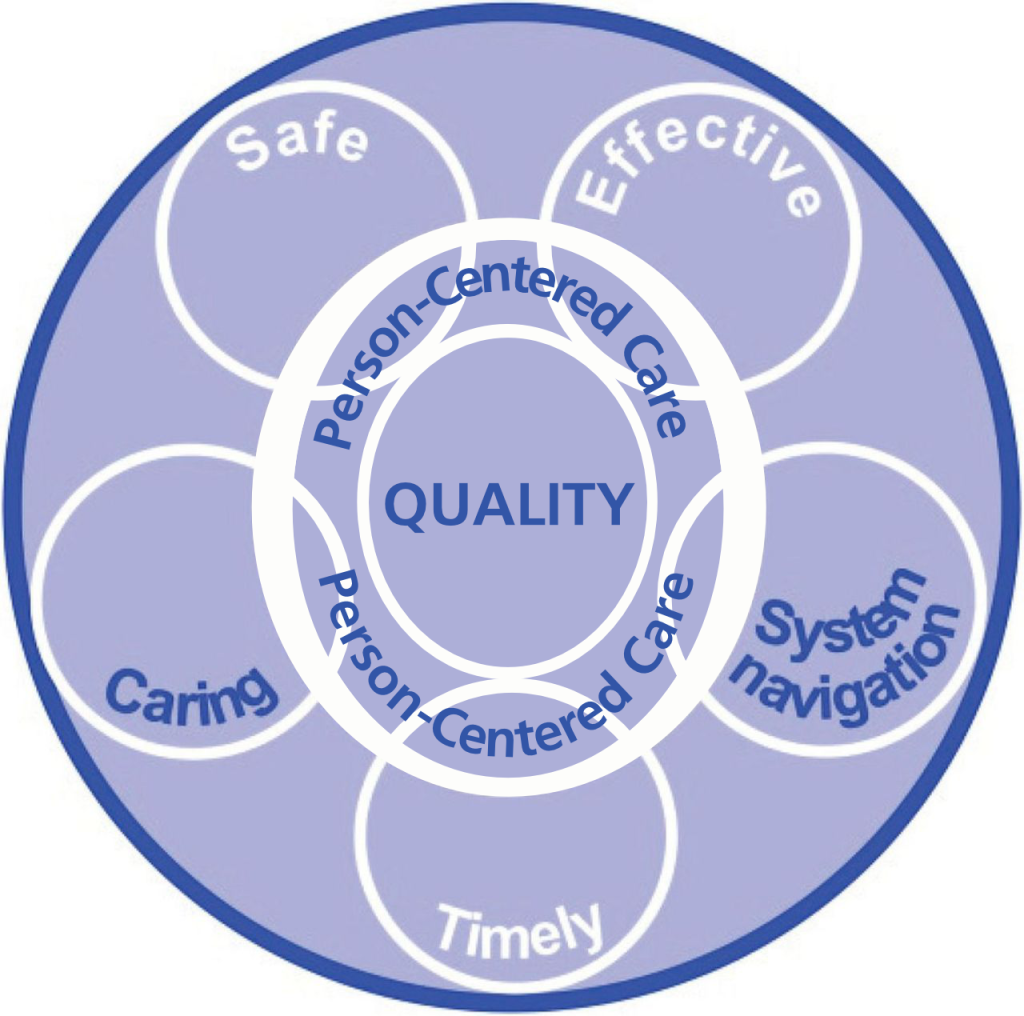7.1 Person-Centered Care
Person-Centered Care
Patient-centered care, also known as person-centered care, has become an increasingly popular term in healthcare over the last decade. This is not a new concept for nurses, as our core commitment to patients is to provide the best care possible. The concept of patient-centered care has been in the literature since the mid-20th century (Parse, 2019). In 1960, the patient-centered approach was considered “a trend in modern nursing practice . . . gradually replacing the procedure-centered approach . . . as the prime concern of the nurse” (Hofling, 1960).
However, the term has grown in popularity in an attempt to meet the challenges in healthcare. This philosophy in creating a larger focus on patterning with patients stems from coordinated care efforts in managing multiple chronic conditions, or co-morbidities. While person-centered care is a philosophy that is embraced by health systems, a consistent manner of quantifying this approach has not been identified (Bokhour et al., 2018).

Person-Centered Leadership
As nurse leaders, person- centered care can and should extend beyond the “patient” but should also include all stakeholders, including those that are impacted by policy and leadership decisions. In a systems-based leadership approach, person-centered collaboration includes a wide array of stakeholder expertise and commitment (Jobe et al., 2020).
Healthcare workforce shortages have a tremendous impact on the patient experience. IN a recent article shared by Planetree International (March 2023) entitled “What Makes Health care Workers Stay in Their Jobs? Culture and Caring.” A foundation of patient-centered care and positive work culture impacts staff retention (Lampe, 2023). Effective nurse leaders can impact a positive work culture and ultimately, staff retention.
An essential reminder of keeping the “persons” in mind when planning will go a long way to achieving optimal outcomes (Learning Exercise 7.1.1).
Learning Exercise 7.1.1
Questions to consider when leading person-centered decisions:
- Who are our primary stakeholders?
- Who will benefit from this decision?
- Who will need to be included in this discussion?
- Why are we making this change?
- Is there another way to complete this?
- What are our priorities?
Next: 7.2 Health Care Trends and Issues
Supplemental Resources Appendix E Person-Centered Strategies

